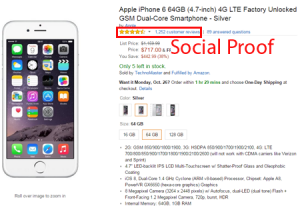Whether it is the recent trypophobes issue with Apple, or the “Vdara death ray” in Las Vegas, there are lessons for brands about managing a design controversy.
The unveiling of Apple’s iPhone 11 Pro and iPhone Pro Max on Sept. 10 triggered an unlikely and unwelcome (for Apple) backlash because of what looks like an innocent product feature: three cameras, grouped together like a triangle. The triple camera is supposed to enable better-quality photos and videos. But in addition, people suffering from a condition called
The Ford Edsel crashes
One of the most famous product bombs occurred in 1957, with the launch of the Ford Edsel. As with many product flops, poor design was not the sole cause, but design certainly played a big role. In 1954, Ford realized that they needed to address the needs of customers upgrading from the lower end of the car market. The car giant poured $250 million into market research as they planned a new middle-market vehicle, the Edsel. The problem? When the Edsel was being developed, big cars with chrome and fins were still “in.” By the time the Edsel debuted, customer tastes had shifted to different styles of cars. Moreover, while Ford was successful in its goal of creating a car that was aesthetically different from anything on the market, it neglected to take into account what customers thought might be aesthetically pleasing. The Edsel was different, all right. And the prevailing sentiment was that it was ugly. By November 1959, Ford had lost about $350 million on its Edsel and discontinued production.
The Vdara Hotel shoots a death ray
Contemporary examples of design missteps also abound. In Las Vegas, the opening of the Vdara Hotel in 2009 happened with plenty of fanfare. Here was a new kind of Las Vegas hotel, one that catered to not to gamblers but to those looking to relax and pamper themselves. It lacked a casino and instead offered luxurious spas and a gorgeous pool. But unfortunately, vacationers discovered something else: hanging out at the pool felt like sitting beneath a magnifying glass, with the sun’s rays scorching the pool area. The problem: the curved glass of the 57-story hotel reflects what guests call the “Vdara death ray” when the sun strikes the glass at a particular angle. As the ray moves across the pool area during the day, temperatures increase by about 20 degrees. Since the hotel’s construction, guests have complained that they have sustained severe sunburns while staying there. In 2010, for example, Chicago attorney Bill Pintas reported that not only did he receive burns on his head, but that a plastic bag next to him actually melted. It’s worth noting that the hotel did come up with a fix: installing giant umbrellas over the pool deck to protect guests. Sometimes the answer to
Google Glass: Not ready for prime time
Sometimes the answer to a problematic design rollout may be to find a different audience, as Google has done for its augmented reality headwear, Google Glass. Shunned by consumers in 2014, the smart glasses flopped with their initial audience for a number of reasons, one of which was product design. As Business 2 Community pointed out in 2016, “Google Glass’ design somehow looked awkward and very unattractive. The product looked . . . as if it [was] still in its prototype stage.” This failure is especially noteworthy because it underscores a fundamental problem that “mixed realities” such as augmented reality and virtual reality have: one of the big reasons these technologies have not caught on more is that they require people to wear dorky headsets. People do not want to be forced to wear things that make them feel uncomfortable. Google’s response has been to reintroduce their product to a business audience including surgeons, factory workers, and engineers. Whether the reboot succeeds remains to be seen, but this version of the smart glasses, which facilitate a small display of augmented reality content floating toward the top of users’ line of sight, do feature an improved design. They look a little like the goggles you might wear in science class.
A tempest in a teapot
And sometimes the best response to design backlash is . . . to ride things out. The so-called Hitler teapot created a social media backlash for JC Penney in 2013 because its design resembled Adolf Hitler. JC Penney’s response was to take the criticisms and concerns in stride, replying good-naturedly to complaints, but not escalating the situation. Their tweets underlined the fact that any resemblance to Hitler was unintentional, and even injected a little humor: “If we designed it to look like something, we would have gone with a snowman or something fun. :)”
What should Apple do?
So what should Apple do about the
Opinions expressed in this article are those of the guest author and not necessarily Marketing Land. Staff authors are listed here.
Marketing Land – Internet Marketing News, Strategies & Tips
(61)







